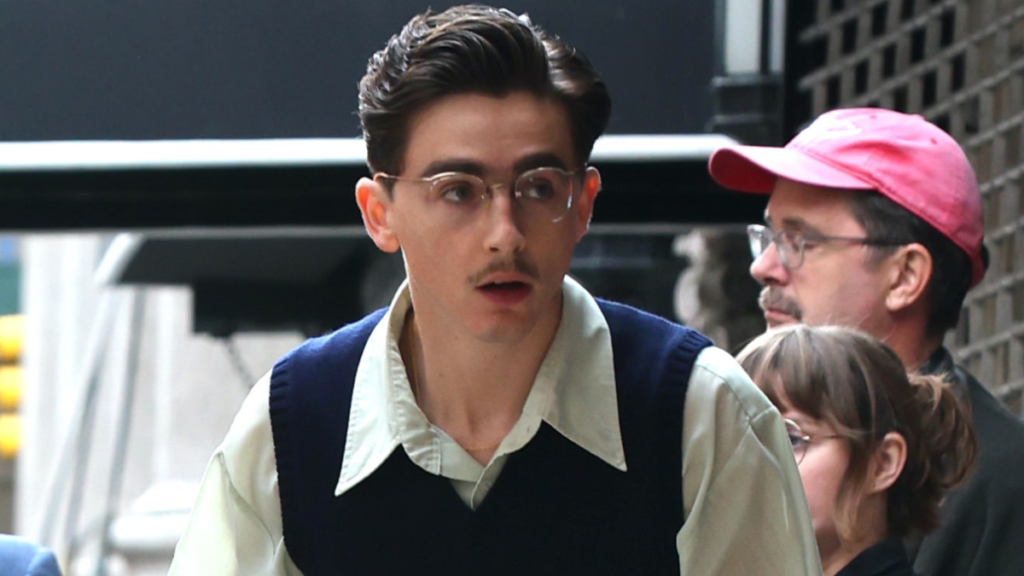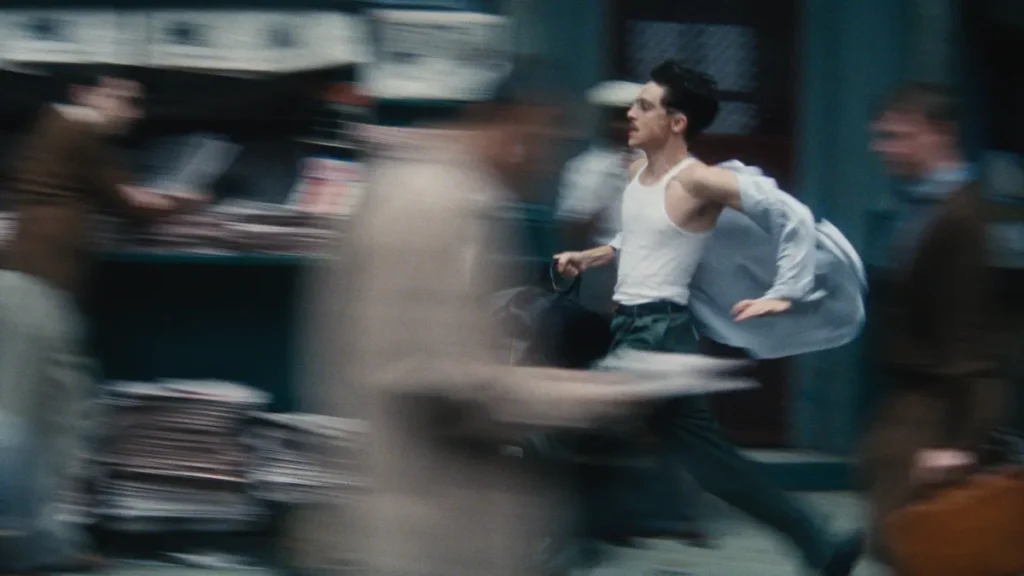A Festival Moment That Became a Frenzy
Every so often a film festival delivers a surprise that transcends mere programming strategy and instead creates a cultural tremor. At this year’s New York Film Festival, that tremor had a name: Marty Supreme. The film appeared suddenly, announced only hours before its premiere, and by night’s end it had become the title on everyone’s lips.
The screening at Alice Tully Hall was electric before the first frame even appeared. Festival whispers had built into a chorus of speculation — some predicted an under-the-radar indie, others a studio debut. When the curtain finally revealed Josh Safdie’s new solo feature, led by Timothée Chalamet, the atmosphere tipped from curiosity into fever pitch. By the film’s end, the theater erupted into prolonged applause and multiple standing ovations. The screening wasn’t simply a showing; it was an event.
The Story at the Core
Marty Supreme spins its tale from the lore of American table tennis legend Marty Reisman, but it avoids the rigidity of a straight biopic. The film follows Marty Mauser, a dreamer, hustler, and restless competitor chasing recognition in mid-century New York’s underground ping-pong scene. He seeks both glory on the world stage and the more elusive prize of personal belonging.
At its heart, the film is about ambition — reckless, obsessive, and transformative. Marty navigates smoky clubs, hustler culture, fleeting romances, and the dizzying promise of international championships. The game itself becomes metaphor: speed, spin, reflex, and constant improvisation. Just as Marty’s paddle flicks and spins, his life swerves between triumph and collapse.
View this post on Instagram
Safdie’s Bold Solo Vision
Josh Safdie, long known for co-directing with his brother Benny, steps into the solo director’s chair here with bravado. While some hallmarks of the Safdie style remain — the chaotic momentum, the claustrophobic energy, the offbeat humor threaded with dread — Marty Supreme bears a singular stamp.
The film is tactile and restless. Shot on 35 mm, the images vibrate with period detail: neon-lit halls, scuffed tables, the glint of sweat under low ceilings. Non-professional actors populate the frame, lending authenticity and unpredictability. Dialogue often feels overheard rather than scripted. Even in quieter moments, the film hums with tension, as if anything could explode into motion.
Safdie’s decision to weave humor and heartbreak into a sports narrative is especially striking. One minute the audience laughs at Marty’s cocky patter, the next they wince at his unraveling. The tonal shifts are daring, but rather than disorienting, they give the film an exhilarating rhythm.
Chalamet at Full Power
The beating heart of Marty Supreme is Timothée Chalamet. From the instant he strides onscreen — wiry, swaggering, eyes darting with restless fire — he commands attention. This isn’t the sensitive poet or quiet dreamer roles audiences once associated with him. This is a performance alive with motion, verve, and contradiction.
Chalamet captures Marty as a figure both magnetic and infuriating. He brims with confidence at the table, talking a mile a minute, but beneath the bravado lurks desperation: for respect, for permanence, for love. His physicality is startling — darting footwork, quick hands, twitching energy. Just as impressive are the moments of collapse, when Marty’s hustles implode and the vulnerability behind the grin bleeds through.
Critics at the festival almost unanimously hailed this as his most complete performance. It’s not just career-best in terms of technique but in sheer inhabitation of character. Watching Chalamet’s Marty is like watching a flame: flickering, dazzling, dangerous, and impossible to ignore.
Why It Resonated
Several factors converged to make the NYFF premiere such a watershed moment:
-
Genre Blending: The film straddles sports drama, caper comedy, period piece, and fever-dream tragedy. That fusion keeps audiences perpetually off-balance, much like Marty himself.
-
Visual Intensity: The decision to shoot on film stock with a kinetic camera style grounds the story in texture and grit. This isn’t a polished period drama; it’s alive with scratches, sweat, and noise.
-
Star Magnetism: Chalamet’s transformation provides the anchor. No matter how wild the tonal swings, his energy gives coherence.
-
Event Strategy: The secrecy of the premiere gave the film momentum before anyone had even seen it. By framing the reveal as a surprise, the festival made the screening itself a moment of discovery.
Risks and Edges
No daring film comes without caveats. Some viewers may find the tonal leaps jarring, or the frenetic pacing exhausting. The narrative sprawls at times, veering between romance, comedy, and melodrama with little warning. Yet even detractors admitted that the risks felt intentional — the chaos mirrors Marty’s own life.
The question now is whether wider audiences will embrace that chaos. Festivals often reward audacity; mainstream viewers may prefer coherence. But Marty Supreme was never designed as safe fare. It thrives on energy, not polish.
The Significance for Josh Safdie
For Josh Safdie, Marty Supreme is a statement of independence. Breaking from the directing duo dynamic, he proves he can command a major project on his own. With a budget that dwarfs his earlier efforts, Safdie still preserves the rawness that made his work distinctive, but he pairs it with ambition at a larger scale.
The film signals that he can operate in both indie grit and awards-season grandeur. If the momentum holds, it could mark the start of a new chapter — Safdie not as half of a duo, but as an auteur with his own evolving signature.
The Chalamet Effect
For Chalamet, the film may represent a turning point. Though he has long been celebrated as one of his generation’s defining actors, Marty Supreme showcases him in a mode few had seen: swaggering, abrasive, almost reckless. It stretches his range in directions that could redefine his trajectory.
If awards season embraces the performance, it could cement him not just as a star but as a legacy figure. Yet even apart from statues and accolades, the role demonstrates a fearlessness that fans and critics alike will remember.
Looking Ahead
With a December release slated, Marty Supreme enters the awards corridor with substantial buzz. Its festival triumph guarantees attention from critics’ circles, but sustaining that enthusiasm with general audiences will be the real test.
Regardless of box office or trophy counts, the film has already secured a place in the lore of festival surprises. For those in the room, it was more than a movie: it was a communal jolt of cinema alive in the present tense.
No comments yet.










